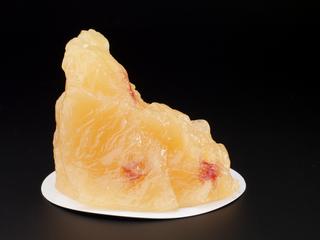
Paratyphoid serum, France, 1915




Ampoule of paratyphoid A and B serum, by Laboratoire de Serotherapie de l'Armee, French, 1915.
The symptoms of paratyphoid, a disease similar to typhoid are a prolonged fever and diarrhoea accompanied by a pink rash. The disease is spread through infected water, food and milk. There are two types of the disease, A and B, and this serum was used to immunise people against both.
The maker’s name translates from French as “Army Serotherapy Laboratory”. Serotheraphy is the treatment of infectious disease by injection of immune serum. This serum was produced for use in the First World War by French troops. However, there was dispute over how effective the serum was with a number of men still contracting the disease despite immunisation.
Details
- Category:
- Public Health & Hygiene
- Collection:
- Sir Henry Wellcome's Museum Collection
- Object Number:
- A629769 Pt1
- Measurements:
-
overall: 95 mm 25 mm, .04kg
weight: 0.394kg
weight: 0.86863lbs
- type:
- immune serum




